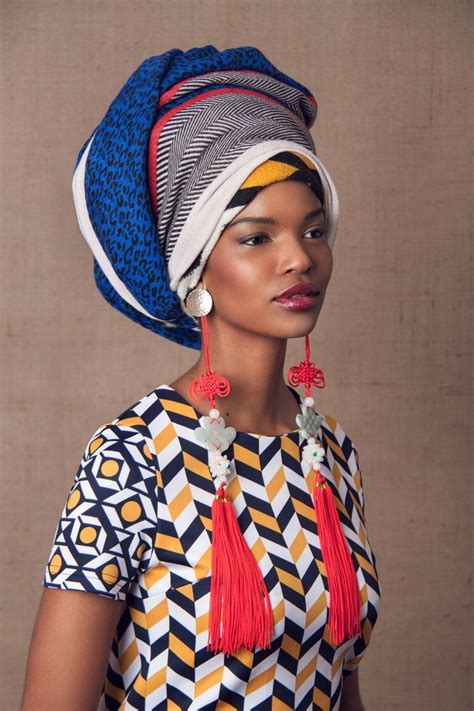Origins and Significance
African head wraps, also known as gele, are deeply rooted in African culture. They hold historical, religious, and social significance, symbolizing status, identity, and marital status.

Historical Evolution:
- Ancient Egypt: Head wraps were worn by pharaohs and nobles to protect against the sun and convey authority.
- West Africa: Yoruba and other ethnic groups wore elaborate head wraps to indicate social status and wealth.
- Central and Southern Africa: Head wraps were used by women to display their knowledge, skills, and availability for marriage.
Types of African Head Wraps
African head wraps come in various styles, materials, and sizes. Some popular types include:
Gele: A traditional Yoruba head wrap made from heavy fabrics like lace, velvet, or silk. It is often tied in intricate patterns and adorned with beads or jewelry.
Turbans: Wrapped around the head in a spiral or circular shape, turbans are usually made from light cotton or linen fabrics.
Head Ties: Rectangular or square pieces of fabric tied around the head in various knots or styles. They are often used as casual head coverings.
Scarves: Thin, versatile scarves can be tied or draped around the head in different ways to create chic and effortless looks.
Benefits of African Head Wraps
Beyond their cultural significance, African head wraps offer numerous benefits:
- Protection: They shield the scalp and hair from sun, wind, and dust.
- Style: Head wraps add an element of style and sophistication to any outfit.
- Convenience: They are easy to wear and adjust, making them practical for everyday use.
- Hair Health: Some head wraps can help protect natural hair from breakage and damage.
Fashion and Culture
African head wraps have gained immense popularity in fashion and culture. They are showcased on runways, incorporated into clothing designs, and worn by celebrities and fashion icons.
Cultural Appropriation:
While African head wraps are celebrated in fashion, it is crucial to recognize their cultural significance. Wearing them without understanding their history and context can be considered cultural appropriation.
How to Tie an African Head Wrap
Tying an African head wrap can be a skill that requires practice. Here are some general steps:
- Place the center of the wrap on your forehead.
- Wrap it around your head, crossing the ends at the back.
- Bring the ends back to the front and tie them in a knot.
- Adjust and style as desired.
Common Mistakes to Avoid
- Overtightening: Avoid tying the head wrap too tightly, as it can cause discomfort and headaches.
- Improper Placement: Make sure the head wrap is centered and covers the hairline properly.
- Inappropriate Occasions: Respect the cultural significance of African head wraps and avoid wearing them in inappropriate settings.
FAQs
1. What materials are African head wraps made of?
A. Fabrics include cotton, silk, lace, velvet, and linen.
2. How long does it take to learn to tie an African head wrap?
A. With practice, most people can master the basic knots within a few tries.
3. Are African head wraps suitable for all hair types?
A. Yes, head wraps can be worn with any hair type, whether natural, relaxed, or braided.
4. What are some creative ways to use African head wraps?
A. Head wraps can be used as wraps for gifts, table runners, or even accessories for bags and shoes.
5. How do I choose the right African head wrap for me?
A. Consider your face shape, personal style, and the occasion you are attending.
6. Can I wear African head wraps with Western clothing?
A. Yes, head wraps can be paired with both traditional and modern Western garments.
Conclusion
African head wraps are versatile and beautiful accessories that hold a rich cultural heritage. They offer a myriad of benefits, from protection and style to self-expression and cultural appreciation. Whether worn for everyday use, special occasions, or fashion statements, African head wraps continue to captivate and inspire in countless ways.
